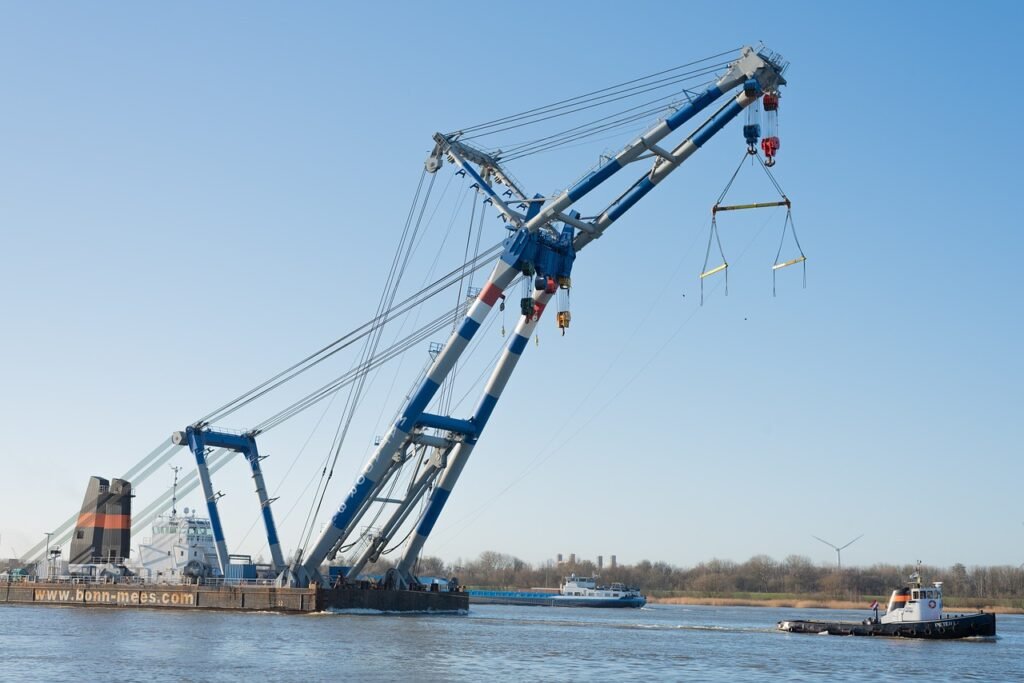In a world racing to meet energy demands and environmental challenges, deep offshore technology has emerged as one of the most advanced and high-stakes engineering frontiers. From drilling oil and gas beneath miles of ocean to deploying subsea robotics and floating wind farms, this sector combines innovation, risk, and promise. In fact, deep offshore technology isn’t just pushing the limits of science and engineering—it’s also reshaping how nations approach energy security and climate sustainability.
The term “deep offshore technology” refers to the tools, systems, and innovations that support exploration and production activities in deepwater regions—typically those beyond 500 meters. In 2025, the American energy sector and global investors are watching this space closely, seeing both incredible opportunities and looming challenges.
What Is Deep Offshore Technology?
Deep offshore technology includes subsea drilling rigs, remotely operated vehicles (ROVs), dynamic positioning systems, floating production storage and offloading units (FPSOs), and underwater infrastructure for oil, gas, and renewable energy. As more shallow-water oil and gas reserves dwindle, energy companies have ventured into deeper seas, relying heavily on these complex systems to maintain production.
According to Reddit’s r/engineering and r/oilandgas, engineers are increasingly focused on the automation and data analytics components of offshore operations. One user noted:
“The newer rigs essentially have AI watching pressure points 24/7—way more advanced than what we had a decade ago.”
These advancements not only improve efficiency but also significantly reduce the margin of error in a high-risk environment.
Why Deep Offshore Technology Matters in 2025
Despite a growing push for renewables, oil and gas still account for a large portion of global energy use. Deep offshore reserves are essential for energy-hungry nations like the United States, especially as land-based production becomes more politically and environmentally difficult. At the same time, offshore wind and wave energy projects—also dependent on similar technologies—are gaining traction.
Moreover, environmental safeguards have improved. With real-time monitoring, remote diagnostics, and better containment systems, deep offshore technology has reduced the frequency and severity of environmental disasters. Still, as Reddit users on r/environment point out, skepticism remains:
“The tech might be better, but a single leak can ruin ecosystems for decades.”
Key Innovations in Deep Offshore Technology
Robotics, AI, and Data Monitoring
One of the most transformative shifts in deep offshore technology is the integration of robotics and artificial intelligence. ROVs and autonomous underwater vehicles (AUVs) now conduct complex repairs and inspections, often in total darkness and crushing pressure.
Dr. Emily Rogers, a marine technology expert at the University of Texas, explains:
“The convergence of robotics and AI is allowing offshore operations to be safer, faster, and smarter. We’re able to predict failures before they happen, which is a game-changer for both safety and efficiency.”
These innovations also tie into big data. Predictive maintenance systems, powered by AI, enable operators to anticipate wear and tear, minimizing downtime and preventing accidents.
Floating Infrastructure and Renewable Integration
The rise of floating infrastructure—such as FPSOs and floating wind turbines—marks another frontier. These structures are particularly crucial for regions like the Gulf of Mexico, where hurricanes and deep waters pose operational risks.
Floating wind farms, supported by deep offshore technology, are now being tested in California and the North Atlantic. This hybrid approach, blending fossil fuel extraction and renewable integration, reflects the sector’s transitional phase.
Challenges Facing Deep Offshore Technology
Operating in deep water is expensive. A single offshore drilling project can cost billions before it becomes profitable. Companies must also navigate a maze of regulations, especially in U.S. waters governed by the Bureau of Ocean Energy Management (BOEM).
In addition, public perception is mixed. While some view offshore projects as necessary, others question their environmental impact and long-term viability. A Reddit thread on r/futurology highlighted this divide:
“We have the tech to drill a mile underwater, but not to clean up a spill in time. That’s the real issue.”
These concerns underscore the importance of continued innovation and transparency.
Reddit’s Take on Deep Offshore Technology
On forums like r/oil and gas, r/engineering, and r/environment, Redditors share insights that reflect the industry’s complexity. Discussions often revolve around technological pride—marveling at the engineering feats—and caution, particularly from environmental advocates.
One highly-upvoted comment from a petroleum engineer read:
“The level of precision we have now is insane. But the risk hasn’t disappeared; it’s just been managed better.”
Another Redditor added on r/technology:
“I work on data visualization for subsea sensors. It’s amazing what we can see now compared to even five years ago.”
Clearly, while the technology is impressive, its real-world application remains a topic of discussion.
The Future of Deep Offshore Technology
Looking ahead, the sector is poised to play a critical role in the global energy transition. Hybrid projects that combine fossil fuels with renewables, real-time emissions monitoring, and underwater carbon capture are already being tested.
Governments are also investing more in offshore research and safety. The U.S. Department of Energy has launched initiatives aimed at developing next-generation materials and digital twin technology for offshore systems.
As these changes take hold, deep offshore technology may evolve from a fossil-fuel enabler to a bridge toward a greener energy ecosystem.
Conclusion: Weighing the Depths
Deep offshore technology is a double-edged sword: it allows electricity independence through deep-sea exploration and drives technological progress in offshore electricity systems, but it also comes with vast operational charges and environmental risks. In 2025, its relevance is plain—specifically for a rustic like the United States that needs to balance business electricity development with long-term environmental sustainability.
By combining robotics in subsea engineering, synthetic intelligence for offshore tracking, renewable electricity integration in deep waters, and superior offshore protection technologies, this region is striving to write a brand new bankruptcy—one where exploration doesn’t always cause exploitation.
To quote one very last Redditor:
“We’re going deeper than ever earlier than—but perhaps, simply perhaps, we’re getting smarter approximately it too.”
Ultimately, the deep offshore era represents the cutting edge of marine electricity engineering, and its tale continues to be being written—under the waves and beyond the horizon.



